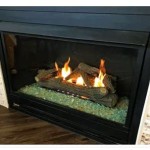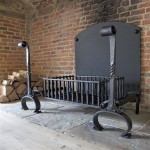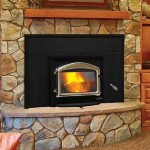Electric Fireplace Stone Veneer: Aesthetics, Installation, and Considerations
An electric fireplace offers a realistic flame effect without the need for venting or the complexities associated with traditional wood-burning or gas fireplaces. When combined with stone veneer, an electric fireplace can dramatically enhance the aesthetic appeal of a room, emulating the look and feel of a classic masonry fireplace without the associated costs and maintenance. This article will explore the benefits of electric fireplace stone veneer, the installation process, and key considerations for homeowners looking to upgrade their living spaces.
Stone veneer, also known as manufactured stone, is a lightweight alternative to natural stone. It is typically made from a blend of cement, aggregates, and pigments, molded to replicate the texture and appearance of various natural stone types such as fieldstone, river rock, or ledgestone. The lightweight nature of stone veneer simplifies installation, as it does not require the structural support that natural stone would demand. This makes it an ideal choice for pairing with electric fireplaces in a variety of residential and commercial settings.
Aesthetic Benefits of Electric Fireplace Stone Veneer
The primary advantage of incorporating stone veneer into an electric fireplace installation lies in its visual appeal. Stone veneer adds a layer of texture and dimension to the fireplace surround, creating a focal point that enhances the overall décor of the room. The wide variety of stone veneer styles and colors allows homeowners to customize the look of their fireplace to match their personal preferences and the existing architectural style of their homes. Whether the desired aesthetic is rustic, modern, or traditional, there is a stone veneer option to complement it.
One of the key benefits of stone veneer is its ability to replicate the natural variations found in real stone. Manufacturers employ sophisticated molding techniques to create veneers with subtle differences in color, texture, and size, resulting in a highly realistic appearance. This natural-looking aesthetic creates a sense of warmth and authenticity that is difficult to achieve with other types of fireplace surrounds, such as painted drywall or tile. Furthermore, stone veneer can be used to create a variety of design features, such as raised hearths, mantels, and recessed niches, adding further visual interest to the fireplace installation.
Beyond the aesthetic benefits, stone veneer can also contribute to the perceived value of a home. A well-designed and professionally installed electric fireplace with stone veneer can be a significant selling point for potential buyers, as it demonstrates attention to detail and a commitment to quality craftsmanship. The timeless appeal of stone ensures that the fireplace will remain a desirable feature for years to come, adding lasting value to the property.
Installation Process of Electric Fireplace Stone Veneer
The installation of stone veneer around an electric fireplace requires careful planning and execution to ensure a safe and aesthetically pleasing result. While some homeowners may choose to undertake the installation as a DIY project, it is generally recommended to hire a qualified contractor with experience in working with stone veneer. A professional installer will have the necessary tools, skills, and knowledge to ensure that the veneer is properly adhered to the wall and that the finished product meets all applicable building codes and safety standards.
The first step in the installation process is to prepare the wall surface. This typically involves cleaning the wall and applying a layer of metal lath, which provides a secure surface for the mortar to grip. The metal lath is attached to the wall studs using nails or screws, creating a strong and stable foundation for the stone veneer. In some cases, it may be necessary to apply a scratch coat of mortar to the metal lath before installing the veneer. This scratch coat helps to create a level and uniform surface for the veneer to adhere to.
Once the wall surface is prepared, the stone veneer can be installed using a specialized mortar designed for use with manufactured stone. The mortar is applied to the back of each stone veneer unit and then pressed firmly against the wall. It is important to maintain consistent spacing between the stones to create a natural-looking appearance. This spacing can be achieved using spacers, which are removed once the mortar has dried. The installer will typically work from the bottom up, carefully aligning each stone and ensuring that it is level and plumb.
After the stone veneer has been installed, the joints between the stones are filled with mortar using a technique called "grouting." Grouting helps to seal the joints and prevent water from penetrating behind the veneer. The mortar is applied using a grout bag or a pointing trowel, and then smoothed and shaped to create a consistent and aesthetically pleasing finish. The type of grout used can vary depending on the desired look and the type of stone veneer being installed. Some homeowners prefer a flush grout joint, while others prefer a recessed or tooled joint.
Finally, the completed installation should be cleaned to remove any excess mortar or debris. This can be done using a soft brush and a mild detergent. It is important to avoid using harsh chemicals or abrasive cleaners, as these can damage the surface of the stone veneer. Once the installation is complete and the mortar has fully cured, the electric fireplace can be installed and connected to a power source.
Key Considerations for Electric Fireplace Stone Veneer
Before embarking on an electric fireplace stone veneer project, it is essential to consider several key factors. These considerations will help to ensure that the finished product meets the homeowner's expectations and that the installation is safe and compliant with all applicable building codes.
First, it is important to choose the right type of stone veneer for the project. There are many different styles, colors, and textures of stone veneer available, so it is important to select a veneer that complements the existing décor of the room and that meets the homeowner's aesthetic preferences. It is also important to consider the size and shape of the veneer units. Larger units can create a more dramatic look, while smaller units can create a more subtle and textured appearance. Additionally, the weight of the veneer should be taken into account, especially if the wall is not structurally sound.
Second, it is crucial to ensure that the electric fireplace unit is properly sized for the room. An undersized fireplace may not provide sufficient heat, while an oversized fireplace may overwhelm the space. It is also important to consider the placement of the fireplace in the room. The fireplace should be positioned in a location that is easily accessible and that provides a clear view of the flames from all seating areas. The electrical outlet should be readily accessible and meet the electrical requirements of the fireplace unit.
Third, it is necessary to comply with all applicable building codes and safety standards. This includes ensuring that the stone veneer is installed in accordance with the manufacturer's instructions and that the electric fireplace is properly grounded and protected by a surge protector. It is also important to ensure that the fireplace is installed a safe distance from any combustible materials, such as curtains or furniture. Consulting with a qualified building inspector or contractor can help to ensure that the installation meets all applicable requirements.
Finally, the homeowner should consider the long-term maintenance requirements of the stone veneer. While stone veneer is relatively low-maintenance, it is important to clean it regularly to remove dust and dirt. This can be done using a soft brush and a mild detergent. It is also important to inspect the veneer periodically for any signs of damage, such as cracks or loose stones. Any damaged areas should be repaired promptly to prevent further deterioration. Sealing the stone veneer can also help to protect it from moisture and stains.
By carefully considering these factors, homeowners can ensure that their electric fireplace stone veneer project is a success. A well-designed and professionally installed electric fireplace with stone veneer can add warmth, beauty, and value to any home.

Brett S Faux Stone Electric Fireplace And Tv Wall Genstone

Allen Roth 65 In W Grey Faux Stacked Stone Infrared Quartz Electric Fireplace The Fireplaces Department At Com

Faux Stone Fireplace Entertainment Center Genstone

Stone Fireplace Electric Faux Mantle Decor Veneer Fireplaces Remodel Mantel

Stacked Stone Electric Fireplace In Gta Selex

Allen Roth 44 5 In W Gray Faux Stacked Stone With Cocoa Infrared Quartz Electric Fireplace The Fireplaces Department At Com

How To Install An Electric Fireplace Morton Stones

Fireplace Archives Genstone

Electric Fireplace Installation In Franklin Home Badgerland Waesha Wisconsin

Fireplace Archives Genstone








